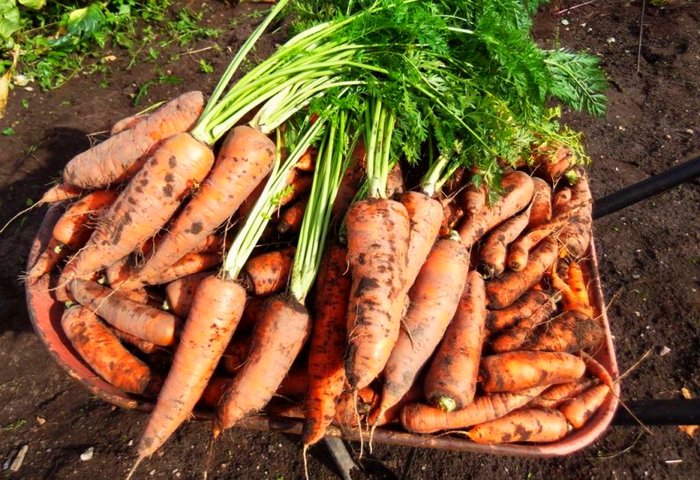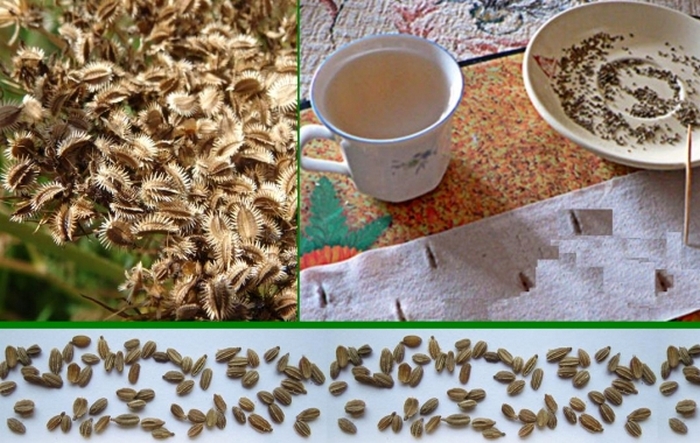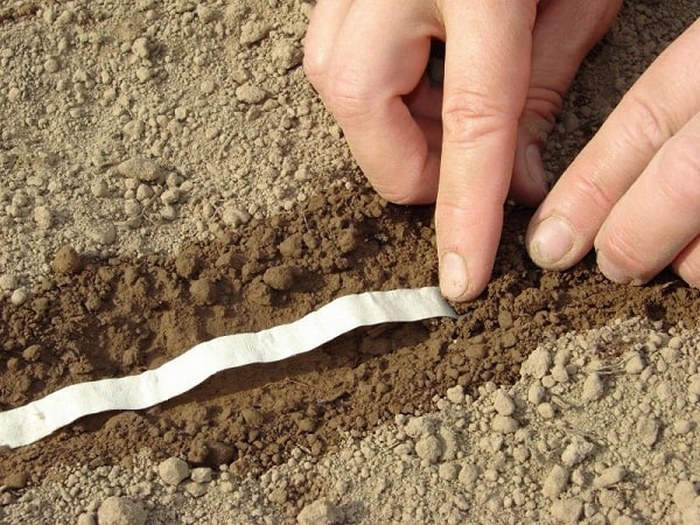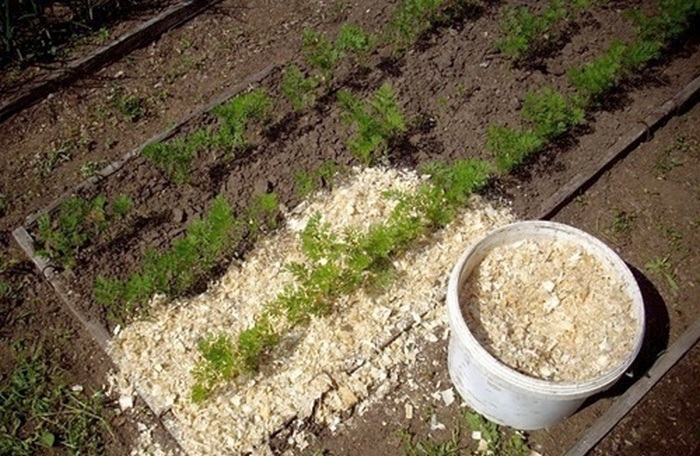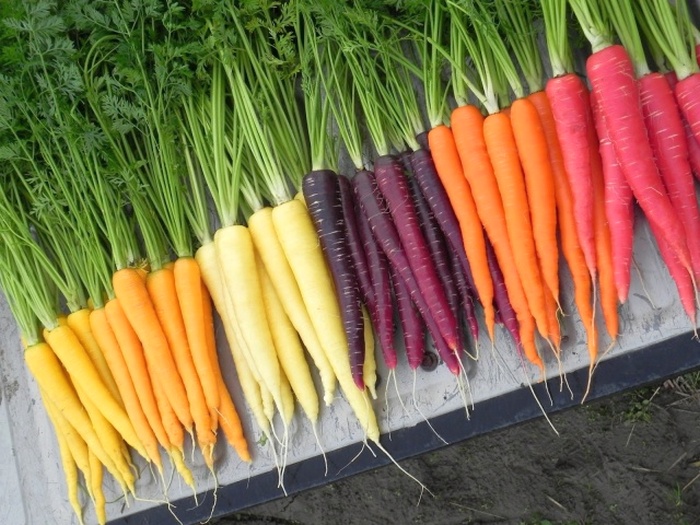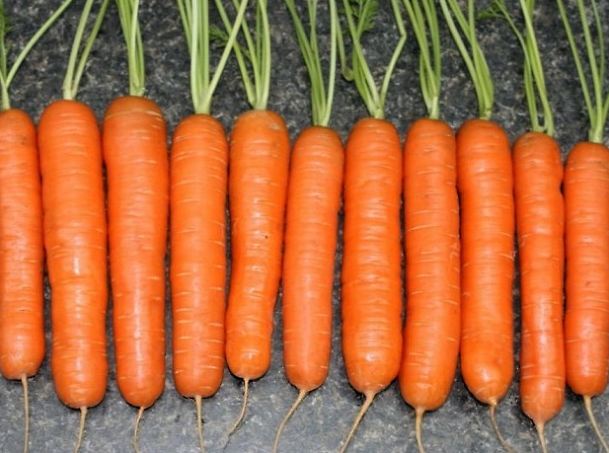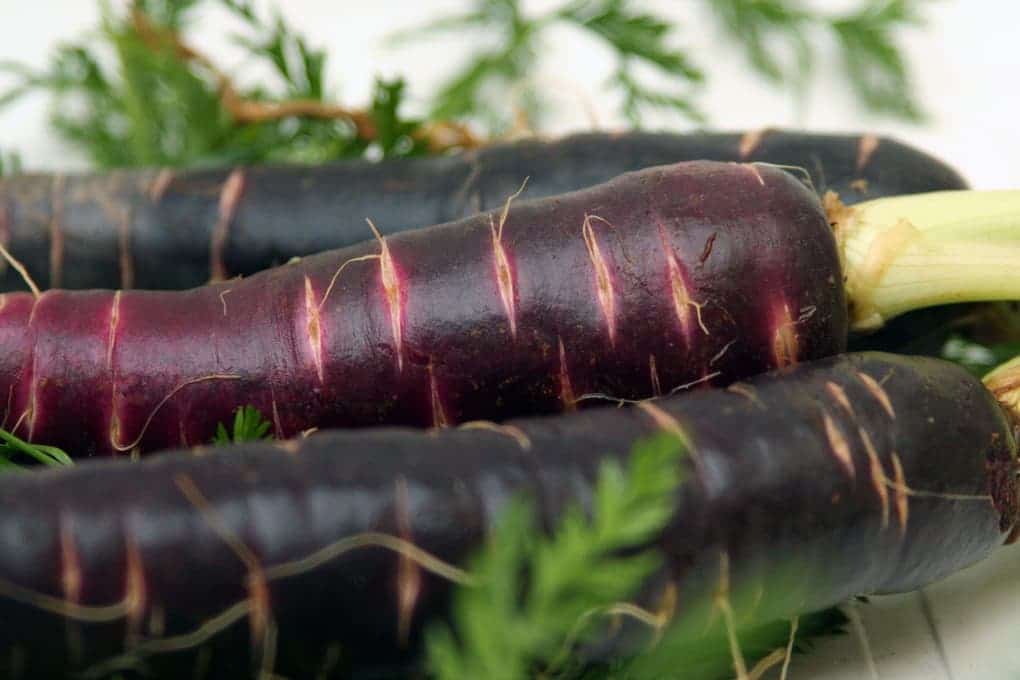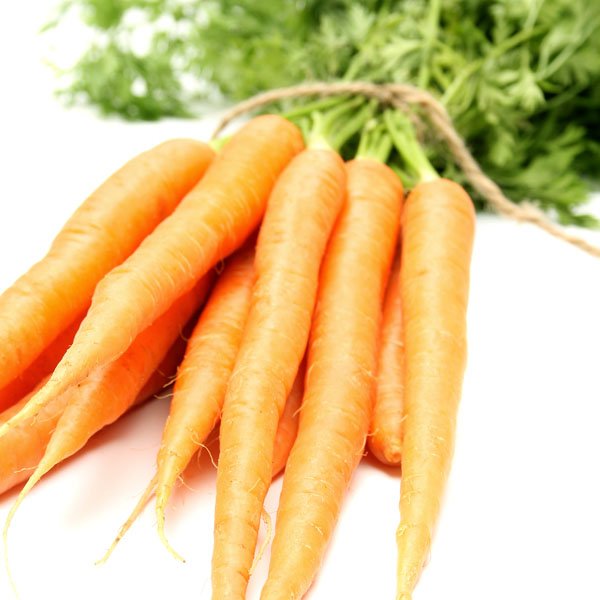Content:
Carrots are an important guest on our table. You can't cook dinner without it. Previously, only its tops were used as a flavoring addition to dishes. Every child knows about the usefulness of carrots.
This article will give a characteristic and description of agricultural technology of the Queen of Autumn carrot variety. Despite her youth (entered in the State Register of the Russian Federation in 2005), she took a worthy place among her brothers.
Description of the variety
Hybrid variety, is a type of Flakke (Valeria) variety. A characteristic feature of this group is the low carotene content. The crop yield, with a good organization of cultivation, reaches 4-9 kg per square meter. Refers to late-ripening varieties (growing season - 120-130 days). High frost resistance was noted - seedlings and fruits tolerate light frosts down to -4 degrees.
Root crops reach 30 cm in length, weight - from 100 to 250 grams. They have a cone shape with a slightly rounded tip. They retain their marketability and taste until June. The very juicy fruits have a sweet and rich taste.
Agrotechnics
Site selection
For planting the Queen of Autumn, sandy loam and medium loamy soil with neutral acidity is more suitable. A soil with an insufficient nitrogen content leads to a weakened development of fruits, this is manifested in a weakly expressed color of the aboveground part of plants. Organic fertilizers easily deal with this problem: a solution of mullein or chicken manure in proportions of 1:10.
Precursors for culture
| Desirable | Unwanted |
|---|---|
| cucumbers | carrot |
| tomato | dill |
| legumes | fennel |
| cereals | parsley |
| cabbage | parsnip |
| bow | caraway |
Lack of lighting negatively affects the growth of the culture; The place is chosen open and dry. The following factors negatively affect the quality of the crop:
- Dense clay soils are undesirable for carrots, it grows slowly, the fruits take an irregular shape and an unpleasant taste;
- Excessive moisture leads to gigantism of the root crop, while it becomes rough and tasteless;
- Prolonged drought reduces the juiciness of the product and leads to crop losses.
Seed preparation
Early spring is the best time to plant seeds. For this variety, suspicious planting is also acceptable, before the onset of stable frosts. In regions with a warm climate, sowing is possible in June, the growing season allows harvesting in November.
To accelerate the germination of carrots, the seeds must be moistened before planting. There are several ways for this procedure:
- In early spring, the seeds wrapped in cloth are buried in damp earth on the bayonet of a shovel. Before sowing, they dig it out, dry it a little and start planting;
- For several days, the seeds are regularly washed with hot water, they are moistened and freed from essential oils that prevent early germination;
- Soaked in salt water (2 tbsp. L.salt per 1 liter of water), the seeds are wrapped in cheesecloth and washed with warm water. After that for 10-15 minutes they are placed in hot, then in cold water. Spread on a damp cloth. In a day, you can start planting;
- Seeds tied in gauze are immersed in warm water. Additionally, disinfection is carried out: 1 tbsp. l. hydrogen peroxide per 200 ml of water. After a day, they are washed and dried;
- Soaking seeds in a solution of wood ash. 20 gr. ash in 1 liter of water is allowed to stand for 2 days. The seeds are immersed in the solution for 6 hours. After drying for 12 hours, start planting.
Sowing
Given the peculiarities of the Queen of Autumn, breeders recommend the following planting scheme: the distance between the rows is 20-30 cm, between the seeds is 4 cm, the seeding depth is 2-3 cm. Carrot seeds are small, it is difficult to achieve such accuracy. Experienced gardeners are advised to use their findings:
- Mix seeds with sand 1: 2;
- Paste the seeds onto a paper tape with paste;
- Brew the paste. Cool and add 1-2 tbsp. l. seeds.
Autumn Queen carrots are sown in a row method in shallow grooves. The grooves are then filled with water from a watering can with a spout. Then sprinkle with earth and lightly tamp. With pre-winter and early sowing, watering is not needed.
Thinning and weeding
Thinning is a must for carrots. A densely growing crop produces thin, emaciated roots that deteriorate during storage. Thinning must be carried out carefully, trying not to damage the root system, which will lead to their branching and deformation.
The first thinning of the seedlings is carried out when the third leaf appears, the second - upon reaching the pencil phase. During weeding, the carrots are slightly huddled to avoid the appearance of a green head in the fruit.
Fertilizing the soil
The queen of autumn is exacting to fertilizers and soil fertilization.
Fresh manure should preferably be applied under its predecessor. The ideal fertilizer is a mixture of peat, mineral fertilizers and humus.
Over the summer, you need to feed the plantings twice. The first bait - in 2 weeks, as the seedlings germinated. Add 20 grams to a bucket of water. potassium nitrate, 15 gr. double superphosphate and urea. Another - 2 weeks after the previous one. Dissolve 20 grams in a bucket of water. potassium chloride and complete mineral fertilizer. This amount of fertilizer is sufficient for an area of two square meters.
Fertilizing with calcium chloride significantly increases the yield and has a good effect on the keeping quality of the product. Overloading with nitrogen fertilizers will lead to a decrease in the quality of preservation of root crops. Top dressing stops one month before harvest.
Watering
Before the first shoots appear, watering should be intensive. During the period of intensive growth, the Queen of Autumn is watered abundantly, but infrequently (once a week). Evening watering is desirable. Watering is stopped a month before harvesting.
Diseases and pests
The Queen of Autumn variety has an increased resistance to diseases. There are rare cases of carrot fly damage. In the presence of a pest, the red-violet coloration of the root collar attracts attention. Insecticides are used to get rid of adversity. To avoid problems with diseases and pests, it is necessary to loosen the soil in time and prevent it from waterlogging.
Storage
Carrots should be carefully prepared before storing them for winter storage. It is necessary:
- Harvest within the terms stated by the manufacturer (after 120-130 days);
- Dig it out on a fine autumn day;
- Do not wash or peel off the ground;
- When cutting tops, leave 0.5 cm;
- Dry in the sun for 2-3 hours;
- Place in a dark, cool place for 15 days.This precaution helps to identify diseased and damaged roots.
For the winter, vegetables are placed in organic boxes or bags. In the form of a filler used:
- sand;
- sawdust;
- moss;
- onion peel;
- clay.
Pros and cons of the variety
Advantages of varietal carrots Queen of autumn:
- Good taste. The fruits are sweet and juicy. You can make carrot juice;
- Picky about leaving;
- Resistant to cracking;
- Not inclined to flowering (flowering of biennial plants in the first year of life);
- Amicable development of root crops;
- Evenness of fruits;
- Suitable for long-term storage.
Along with a number of positive qualities, no shortcomings were identified. The value of the Queen of Autumn is proven by its popularity among gardeners.
